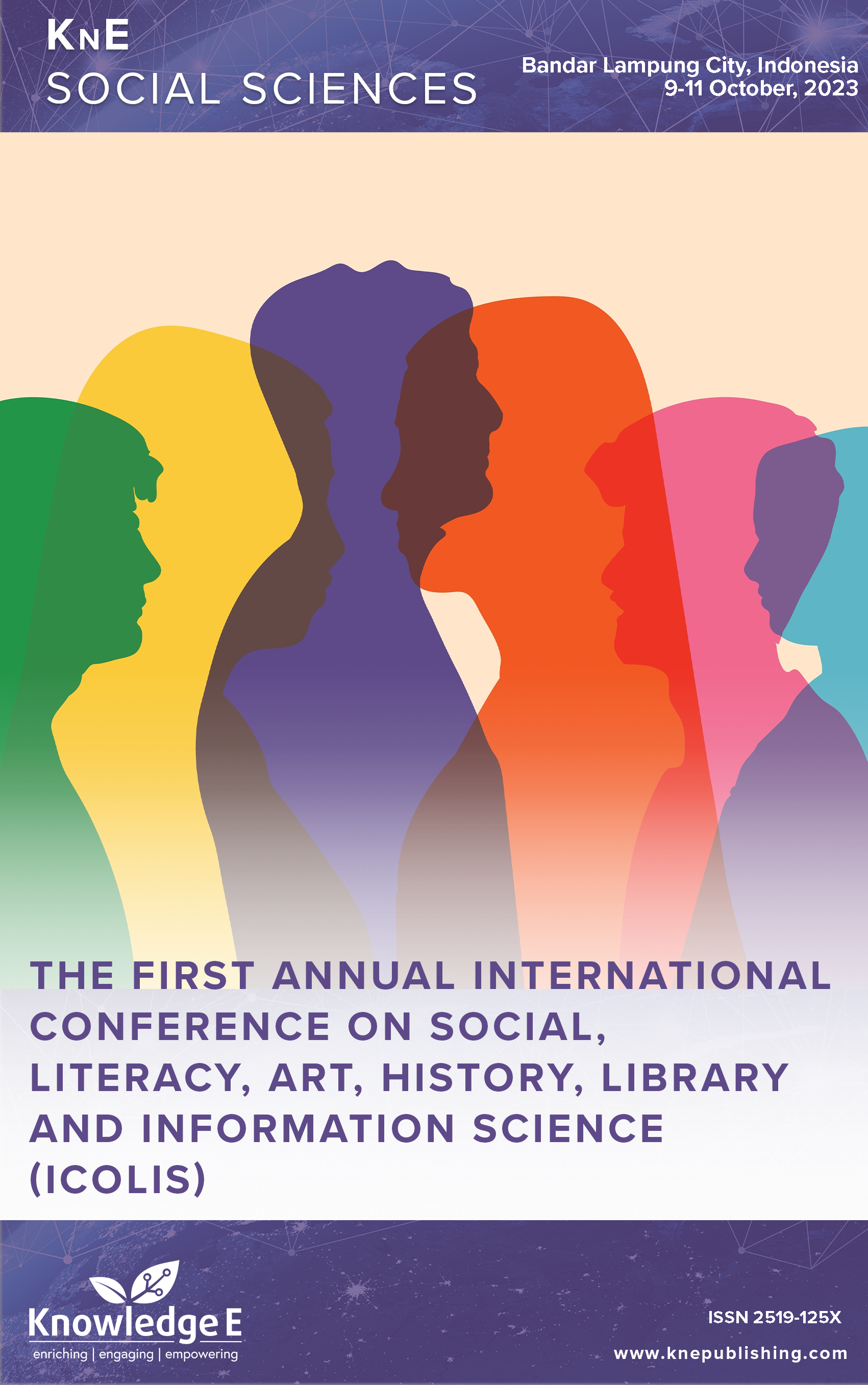Ulema and Santri Movement During the Indonesian Revolution of 1949-1950
DOI:
https://doi.org/10.18502/kss.v9i12.15849Abstract
This article analyzes the power of Islam as a mobilizer against the invaders and defending the NKRI during the revolution in 1949-1950. This research illustrates that the Indonesian revolution is Islamic. Because Islam in that era became the power base in Indonesia. Apart from the majority Muslim population, Islam also dared to show its actions in resisting colonialism. Promoters in the Islamic movement were played by Ulema and Santri. The form of struggle of scholars during this revolution began with the call for jihad which aimed to revive the spirit of the Santri involved in the fisabilillah war. Then it was seen in his fatwa about the prohibition of Hajj to maintain Indonesia’s security from the threat of the invaders. While the struggle of the Santri by forming Islamic movements and fronts, namely the Hisbulloh and Sabilillah lascar fronts, which then attacked the British army headquarters in Surabaya. The Santri was also involved in the battle of November 10, 1945, which was incorporated with the Gerakan Pemuda Islam Indonesia (GPII). This research uses a historical methodology that includes four steps, namely heuristics, source criticism, interpretation, and historiography.
Keywords: Ulema and Santri, Islamic Movement, Indonesian Revolution 1949-1950
References
“https://id.wikipedia.org/wiki/Revolusi_Nasional_Indonesia
kevin w. foog, spirit islam pada masa Revolusi Indonesia. jakarta: PT.Mizan Publika.
Louis Gottschalk, Mengerti Sejarah. 2010.
Pranoto SW. “Teori dan Metodologi Sejarah,” 2010.
Zulkarnain, “Revolusi dalam Perspektif Sejarah,” Istor. Pendidik. Sejarah, Univ. Negeri Yogyakarta, 2008.
Ricklef, Sejarah Indonesia Modern. Yogyakarta: Gajah Mada University Press; 1991.
Reid AJS. Revolusi Nasional Indonesia. jakarta: Pustaka Sinar Harapan, 1996.
Roswandi Irwan. Sejarah Kabupaten Subang. Bandung; 2005.
“Sejarah Militer Kodam Siliwangi VI,” 1968
Ayuningtyas DR, Suharso R, Sodiq I. “Perjuangan Panglima Besar Jenderal Soedirman pada Masa Revolusi Fisik Tahun 1945-1950.”J Indones Hist. 2016;5(1):10– 17. [Online]. Available: https://journal.unnes.ac.id/sju/index.php/jih/article/view/19720
Ayuningtyas DR. “Perjuangan Panglima Besar Jenderal Soedirman Pada Masa Revolusi Fisik Tahun 1945-1950 Di Indonesia (Desa Pakis Baru Pacitan).” J Indones Hist. 2016;5(1). [Online]. Available: http://lib.unnes.ac.id/27218/1/3111412005.pdf
Foog KW. Spirit Islam pada masa Revolusi Indonesia. jakarta: PT Mizan Publika (Anggota IKAPI), 2020.
Rahman Hamid A. “Naik Haji di Masa Revolusi. Lampung Post SAI,” Lampung Post SAI, Bandar Lampung, 2023.
Taufik ismail, “berhaji Pada Masa Revolusi: Ibadah haji Dengan Misi Tersembunyi jamaah Haji Indonesia tahun 1945-1950,” 2020.
D. D. Dkk, Indonesia dan Haji. jakarta: INIS, 1997.
Hardiyanto D. “Hisbulloh: Laskar Pejuang Yang di Buang,” Majalah Islam Sabili.
Jauhari N. “Resolusi Jihad dan Laskar Sabilillah Malang Dalam Pertempuran Surabaya 10 Nopember 1945,” J. Stud. Sos., vol. 5, no. 2, pp. 69–75, 2013, [Online]. Available: http://lp2m.um.ac.id/
Mulyaningsih J, Hamidah DN. “LASKAR SANTRI PEJUANG NEGERI: Rekam Jejak Laskar Hizbullah dalam Pertempuran 10 November 1945 di Surabaya,” J. Tamaddun J. Sej. dan Kebud. Islam. 2018;6(2): https://doi.org/10.24235/tamaddun.v6i2.3519. DOI: https://doi.org/10.24235/tamaddun.v6i2.3519
Z. M. Bizawe, Lascar Ulama-Santri & Resolusi Jihad Garda Depan Menegakkan Indonesia (1945-1949). jakarta: Pustaka Compass, 2014.
Suryanegara AM. Api Sejarah 2. Bandung: Salamadani; 2010.
Ilham M. “Historiografi Peran Laskar Hizbulloh pada Pertempuran 10 November 1945 di Surabaya,” UIN Sunan Ampel Surabaya, p. Digilib. Uinsby.ac.id, 2015.
“https://www.academia.edu/37872658/Gerakan_Islam_pada_masa_Revolusi_Fisik
“https://anri.go.id/storage/pages/1886745388-c9mgbf.jpg
“https://id.wikipedia.org/wiki/Pertempuran_Surabaya
Macswara G. Garda Macswara. 2010.Sejarah Revolusi Indonesia 1945-1950 Perjuangan Bersenjata & Diplomasi Untuk Mempertahankan Kemerdekaan. Yogyakarta: Narasi. Yogyakarta: Narasi; 2010.
W Iryana, MB Mustofa. Upaya Pelestarian Cagar Budaya Batu Bedil Melalui Komunikasi Partisipatif Interpersonal Pada Masyarakat Lokal Di Kabupaten Tanggamus Provinsi Lampung. PURBAWIDYA: Jurnal Penelitian dan Pengembangan Arkeologi, 2023; 12 (2): 138-155. https://doi.org/10.55981/purbawidya.2023.683. DOI: https://doi.org/10.55981/purbawidya.2023.683
Iryana W, Mustofa MB. May 1998 Mass Riots in Jakarta: A Holistic and Contextual Analysis of Critical Political Communication. Paramita: Historical Studies Journal. 2023;33(2):201–11. DOI: https://doi.org/10.15294/paramita.v33i2.38022
MB Mustofa, W Iryana, S Wuryan. Aktifitas Dakwah Keagaman Ahlul Bait Nabi di Wilayah Lampung (1998-2014). Ath-Thariq: Jurnal Dakwah dan Komunikasi. 2023; 7 (1): 72-83. https://doi.org/https://doi.org/10.32332/ath-thariq.v7i1.6423.
Iryana W, Mustofa MB, Anwar MS. Budaya Bendawi Pra Islam di Keraton Cirebon Indonesia. Bulletin of Indonesian Islamic Studies. 2023;2(1):19–38. DOI: https://doi.org/10.51214/biis.v2i1.503

